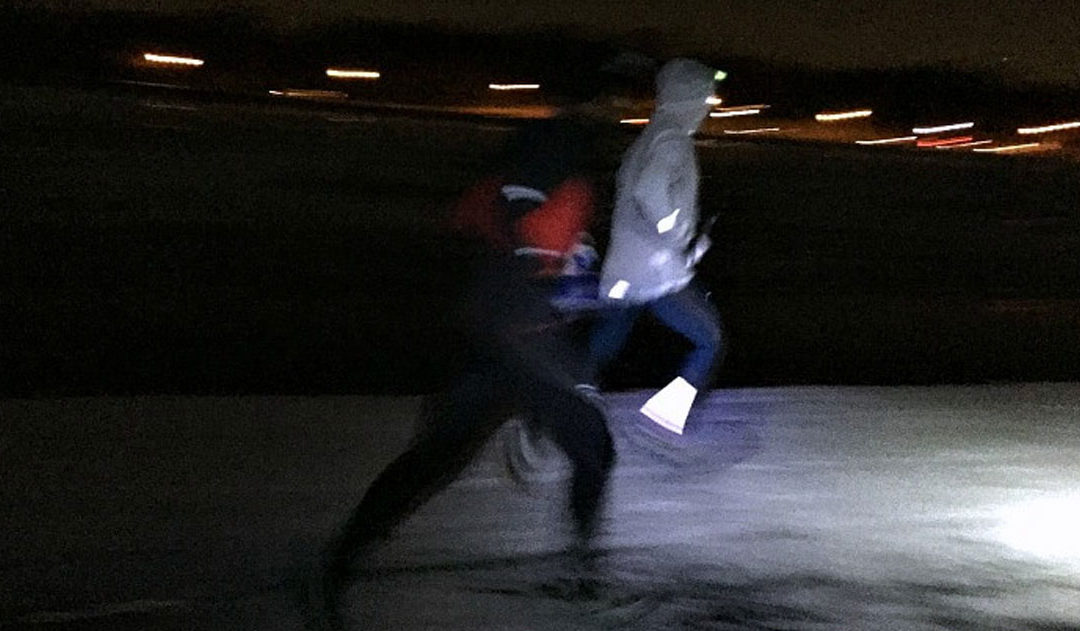With available daylight hours quickly dwindling, running in the dark is inevitable for most of us wanting to remain active during the darkness of fall, winter, and early spring. Unless your schedule is remarkably flexible, running this time of year is usually done before or after work – both of which are after the sun sets.
That’s not all bad, in fact, I sort of enjoy running when it’s dark. Without the distractions of my surroundings, my runs becomes more internally focused, and introspective. It also seems to help them go by a little quicker.
Every year, it seems there is a news story about a runner who is involved in some sort of terrible accident involving a motorist who didn’t see them. This is rare (compared to the number of people running in the dark), but still terrifying enough to warrant some additional attention.
With dark mornings and evenings nearly here, it seemed like a good time for the following running safety reminders. These incredibly simple tips will ensure you can see where you’re running and, most importantly, allow others to see you. They are so easy, there’s really no reason you shouldn’t follow them.
Note: running in the dark is dangerous. While the following tips will certainly minimize risk, it’s always best to run in well lit areas, ideally when the sun is awake.
Lights to See Where You’re Going
Running Headlamps provide valuable confidence for both seeing where you’re going, and allowing others to see you. There is a plethora of options to choose from, at price points starting at $10. LED models are by far the best option, ideally with both a spot and wide angle beam.
Knuckle Lights are lights you wear on your knuckles. These are a spender, but an easier to carry, version of a simple flashlight. The main benefit to these is that you can direct the light wherever you point them, without having to wear something on your head. You can keep one pointed straight ahead, while the other is scanning your periphery.
Up until about a year ago, I rarely ran with a light source. Because 95% of my runs are done in my neighborhood in SE Portland, I felt like I had enough light from the street lights. After a rather scary encounter with both a car and a cyclist on the same run, I started running with a small flashlight dangling from my wrist. It’s a little annoying, but creates a sort of halo around me while I run.
Totally worth it!
Lights for Others to See You
A Running Vest won’t win you any fashion awards, but does a tremendous job of alerting cars well BEFORE they hit you. One like this is extremely light weight and, when adjusted properly, is barely noticeable on your body.
There’s certainly no shortage of blinking, flashing and strobing LED devices. From clip on buttons, to slap bracelets and even headbands and shoelaces. Their main purpose is to alert others you’re near. A blinking strobe like this one is by far my favorite running accessory when it’s dark.
Although most running gear comes with some form of reflective material built in, it’s minimal. Unless you’re spending hundreds of dollars on something like this, the build in reflective quality is lacking. There is a plethora of inexpensive reflective tape you can adhere to virtually any clothing or gear you already own. For about $5 a roll, it’s an easy (although temporary), way to run in the dark without getting killed.
What tools or tricks do you use to run in the dark?
Running in the dark can be a fun new way to enjoy our sport.You should ALWAYS be vigilant about paying attention to your surroundings whenever you run, but especially in the dark. You should NEVER let a car surprise you, but things happen.
Before your next run, stop by your local running retailer and pickup a running light or reflective gear to stay safe!




